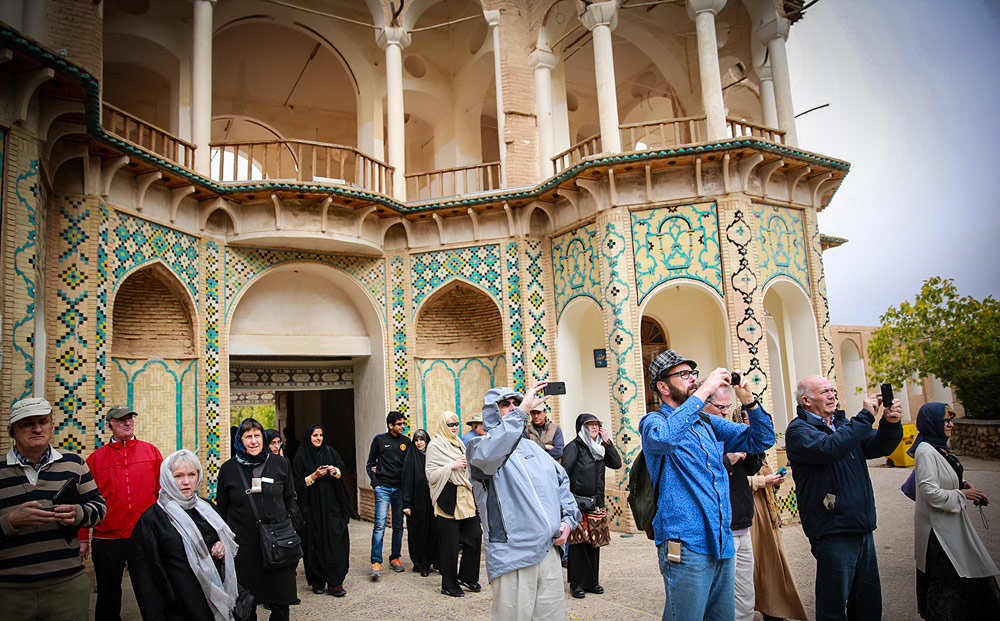Iran’s nascent travel sector continued on the growth trajectory in 2015, outperforming predictions made by senior international authorities. Nevertheless, the growth rate is far from adequate to ensure the country can and will meet its ambitious 2025 goal.
According to the World Travel and Tourism Council’s annual Economic Impact Report — published in late March — the industry’s direct contribution to Iran’s GDP was 294 trillion rials ($8.5 billion) in 2015 (2.5% of GDP), up $1.6 billion from 2014.
The WTTC had predicted a $400-million increase in tourism contribution to GDP in 2015.
This primarily reflects the economic activity generated by industries such as hotels, travel agencies, airlines and other passenger transportation services (excluding commuter services). But it also includes, for example, the activities of restaurants and leisure industries directly supported by tourists.
Leisure travel spending (inbound and domestic) generated 90.8% of the industry’s direct contribution to GDP, compared with 9.2% for business travel spending
Tourism’s direct contribution is expected to grow by 4.9% per annum to 505 trillion rials, or $14.6 billion (2.8% of GDP), by 2026.
Creating Jobs
The industry generated 476,000 jobs directly in 2015 (1.9% of total employment) and this is forecast to grow by 4.2% in 2016 to 496,000 (1.9% of total employment). Previously, it was forecast that tourism would generate 431,000 jobs directly in 2015.
This includes employment by hotels, travel agencies, airlines and other passenger transportation services (excluding commuter services). It also includes, for example, the activities of the restaurant and leisure industries directly supported by tourists.
In 2014, about 413,000 jobs were directly created by the travel sector.
By 2026, the industry is predicted to generate 687,000 jobs directly, an increase of 3.3% per year over the next ten years.
Revenue from Investment & Tourist Expenditure
Money spent by foreign visitors (called visitor exports in the industry) is a key component of the direct contribution of tourism. In 2015, international tourists spent 38 trillion rials ($1.1 billion) in the country, up $400 million from 2014.
Visitor export is expected to grow by 2.3% in 2016.
Furthermore, the industry attracted 96 trillion rials ($2.8 billion) in capital investment last year, which is expected to rise by 5.6% in 2016, and by 5.8% per year over the next ten years to 177 trillion rials ($5.1 billion) in 2026.
Ambitious Goal
Iran’s declared goal is to attract 20 million tourists every year by 2025, generating $30 billion in revenue. However, if the WTTC’s forecast is anything to go by, achieving that target is not an easy enterprise.
About 4.7 million foreign tourists visited Iran in 2014. Last year it was over 5 million.
In March 2015, the council had predicted that international arrivals would reach 4.7 million a year by 2025, but in its latest report, it has doubled that figure to 8.6 million but still a far cry from the targeted 20 million tourists.
Nevertheless, there is still a chance that Iran could at least come close to hitting the magic number. Since the signing of the landmark nuclear deal between Iran and the six major world powers (the five permanent member of the United Nations Security Council plus Germany) in June 2015, the country’s nascent tourism industry has been gaining currency and attracting attention unseen in the recent past. Numerous western travel agencies, including many in France, Britain and the US, have organizing multiple tours for 2016.
The lifting of sanctions in January will no doubt help boost Iran’s global image, which may help draw more visitors, not to mention international investors who can help develop Iran’s aging and inadequate infrastructure by building quality hotels and help improve infrastructure.
The WTTC’s report is based on the council’s own research, and not limited to data submitted by Iran. Because Iran lacks a Tourism Satellite Account — a standard statistical framework and the main tool for the economic measurement of tourism — the WTTC and United Nations World Tourism Organization have to rely on projections and estimates for their annual reports.


